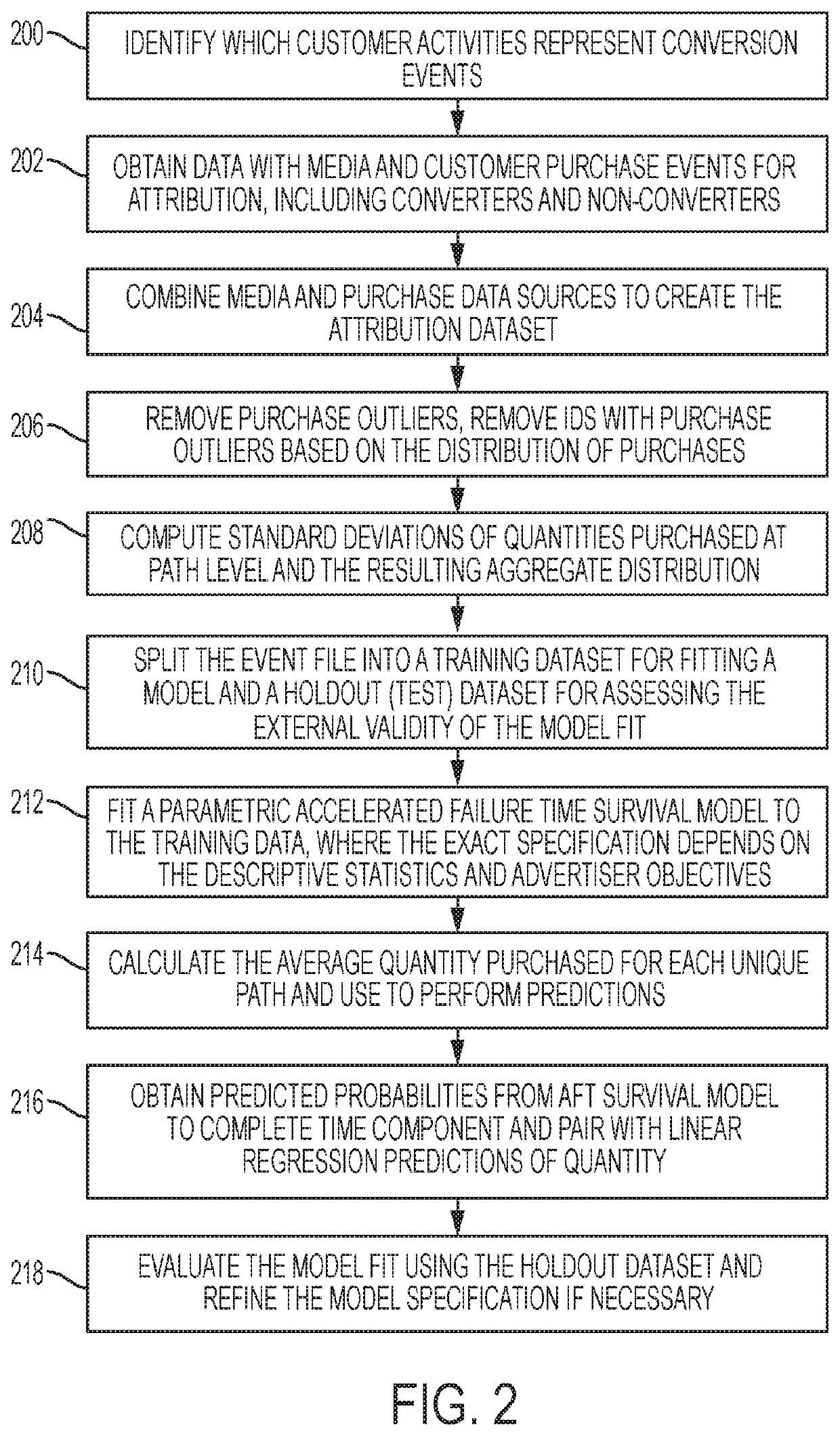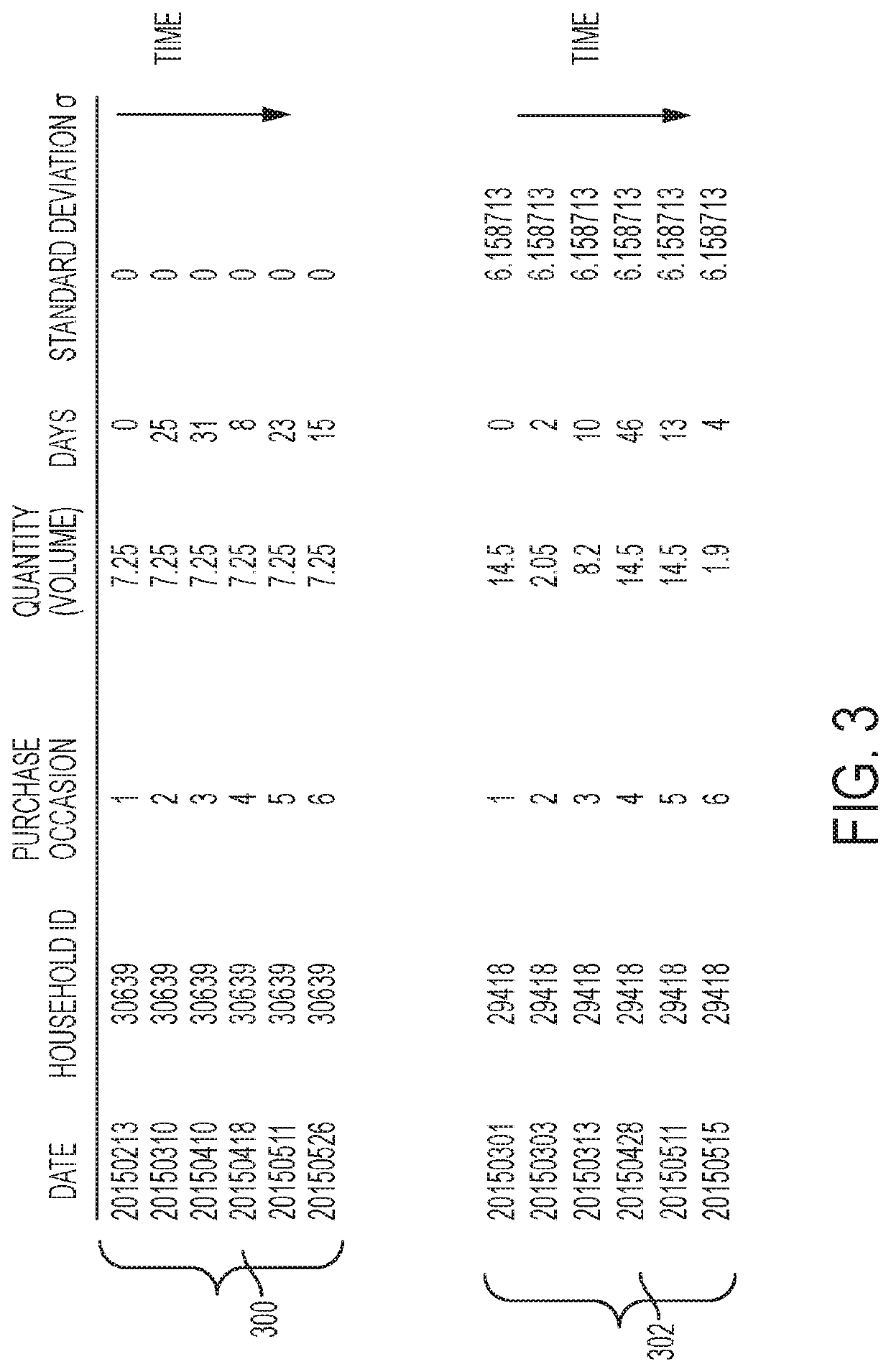Method and system to account for timing and quantity purchased in attribution models in advertising
a technology of attribution models and timing and quantity, applied in the field of media effectiveness measurement techniques, can solve the problems of poor separation of correlation and causality in rule-based models, not properly crediting tactics that disproportionately, not properly adjusting for cross-channel interactions and the value of prospecting versus converting media, and achieves low variation in product packaging
- Summary
- Abstract
- Description
- Claims
- Application Information
AI Technical Summary
Benefits of technology
Problems solved by technology
Method used
Image
Examples
Embodiment Construction
[0016]While the following detailed description contains many specifics for the purposes of illustration, those of ordinary skill in the art will recognize that many variations and alterations to the following details are possible within the scope of the exemplary embodiments of the disclosed system and methods.
[0017]FIG. 1 illustrates a basic data infrastructure to collect, bind, analyze, and model data. Regarding the link from an advertiser website (100) to an attribution database (102), activity is tracked and analyzed, including but not limited to online website events such as visits, reviews, purchases, add to carts, store locators, and offline in-store activities linked through third party cookie matching. In order to account for quantity (e.g., units, volume, length, number of phone lines, etc.), the attribution database may also comprise sales data (104). The data can be linked and modeled in the attribution database.
[0018]One exemplary embodiment is a computer-implemented me...
PUM
 Login to View More
Login to View More Abstract
Description
Claims
Application Information
 Login to View More
Login to View More - R&D
- Intellectual Property
- Life Sciences
- Materials
- Tech Scout
- Unparalleled Data Quality
- Higher Quality Content
- 60% Fewer Hallucinations
Browse by: Latest US Patents, China's latest patents, Technical Efficacy Thesaurus, Application Domain, Technology Topic, Popular Technical Reports.
© 2025 PatSnap. All rights reserved.Legal|Privacy policy|Modern Slavery Act Transparency Statement|Sitemap|About US| Contact US: help@patsnap.com



